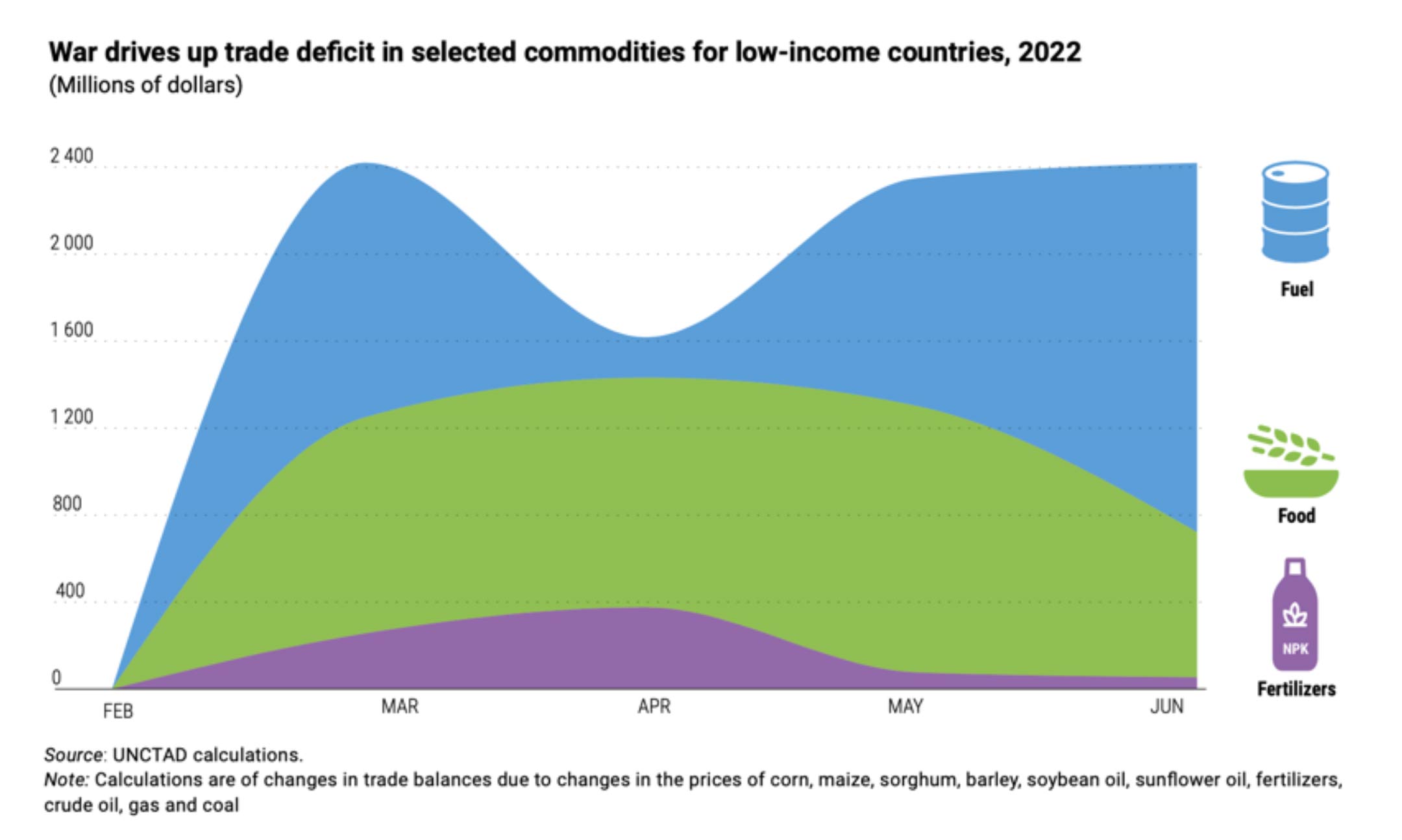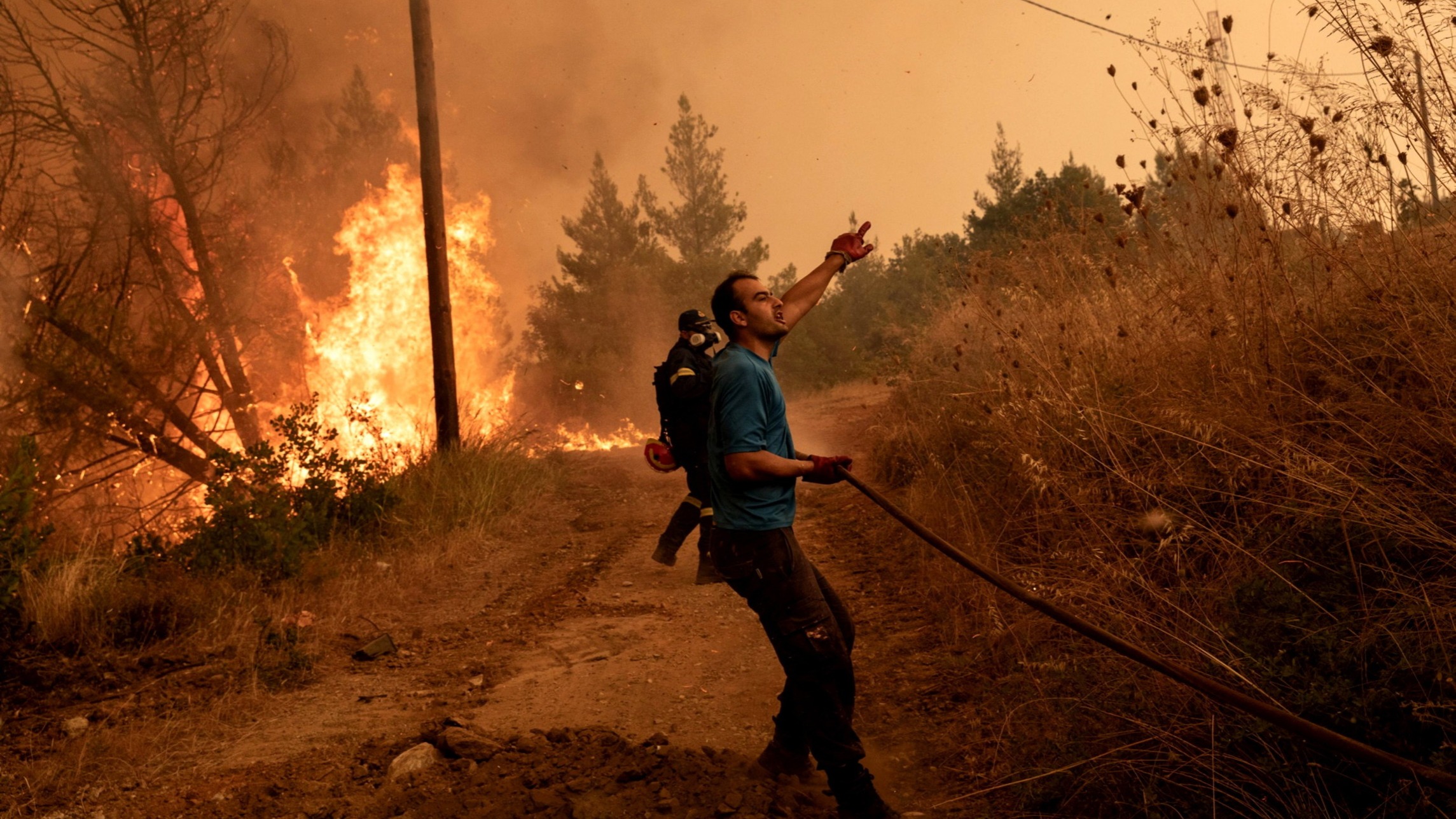Climate change drives up global food prices, adds to societal risks | Daily Sabah – Daily Sabah

Report on the Impact of Climate Change on Global Food Prices and Sustainable Development Goals
Introduction: Climate Extremes and Food Price Volatility
A recent study, “Climate extremes, food price spikes and their wider societal risks,” conducted by European research institutes, establishes a direct correlation between climate change-induced extreme weather events and significant increases in global food prices. These phenomena pose a direct threat to global food security and undermine progress toward several key Sustainable Development Goals (SDGs), particularly SDG 2 (Zero Hunger) and SDG 13 (Climate Action).
Regional Impacts on Agriculture and Food Security
The report details how climate-related disasters have caused sharp price increases for staple food products across various regions, demonstrating the widespread vulnerability of global food systems.
Europe
- Olive Oil: Severe droughts in Southern Europe (2022-2023) resulted in a 50% price increase for olive oil across the European Union by January 2024.
- Potatoes: Excessive rainfall in the United Kingdom led to a 22% rise in potato prices at the beginning of 2024.
Asia
- East Asia: Heatwaves in 2024 caused a 70% year-over-year increase in Korean cabbage prices (September 2024), a 48% rise in Japanese rice prices, and a 30% increase in Chinese vegetable prices.
- Southeast Asia: A heatwave in Vietnam (February 2024) doubled robusta coffee prices by July, while a 2023 drought in Indonesia increased rice prices by 16%.
- South Asia: Devastating floods in Pakistan (August 2022) caused a 50% surge in rural food prices. In India, a May 2024 heatwave led to an 89% increase in onion prices and an 81% increase in potato prices.
Africa, Australia, and the Americas
- Australia: Floods in 2022 caused a staggering 300% increase in the price of lettuce.
- Africa: A March 2024 heatwave in South Africa resulted in a 36% rise in corn prices. In Ethiopia, a 2022 drought led to a 40% increase in food prices by March 2023.
- North America: Drought in California and Arizona in 2022 contributed to an 80% year-over-year increase in U.S. vegetable prices. A 2023 drought in Mexico caused a 20% rise in fruit and vegetable prices.
Global Commodity Markets and Systemic Risk
Coffee and Cocoa
Climate extremes have also destabilized global commodity markets, impacting products with worldwide supply chains. This volatility directly challenges SDG 8 (Decent Work and Economic Growth) by disrupting key agricultural sectors.
- Coffee: A 2023 drought in Brazil, the world’s largest producer, contributed to a 55% increase in global coffee prices by August 2024.
- Cocoa: Extreme heat and prolonged drought in Ghana and Ivory Coast, which supply approximately 60% of the world’s cocoa, caused global prices to surge by nearly 300% as of April 2024.
Socioeconomic Consequences and Implications for Sustainable Development Goals
The climate-induced surge in food prices triggers a cascade of societal risks, directly impeding the achievement of the 2030 Agenda for Sustainable Development.
Direct Challenges to the SDGs
- SDG 1 (No Poverty) & SDG 10 (Reduced Inequalities): Rising food prices disproportionately impact low-income households and developing nations, increasing poverty and exacerbating inequality. The high share of food costs in household budgets makes these populations exceptionally vulnerable.
- SDG 2 (Zero Hunger): Price spikes and supply disruptions directly threaten food security, making nutritious food inaccessible for millions and reversing progress on ending hunger.
- SDG 3 (Good Health and Well-being): Inadequate nutrition resulting from unaffordable food can lead to increased susceptibility to disease, placing additional burdens on public health systems.
- SDG 8 (Decent Work and Economic Growth): Food price inflation contributes to overall inflation, posing significant risks to economic stability, particularly in developing countries where food constitutes a large portion of the inflation basket.
- SDG 13 (Climate Action): The findings serve as a critical warning, highlighting the urgent need for robust climate mitigation and adaptation strategies to protect global food systems and prevent further socioeconomic instability.
1. Which SDGs are addressed or connected to the issues highlighted in the article?
-
SDG 2: Zero Hunger
The article directly addresses this goal by highlighting how climate change-induced extreme weather events threaten “food security” and lead to significant increases in food prices. This directly impacts people’s ability to access sufficient and nutritious food.
-
SDG 13: Climate Action
This is the root cause of the issues discussed. The article explicitly states that “Extreme weather patterns and events resulting from climate change” are the primary drivers of rising food prices. It details the impacts of “droughts,” “floods,” and “heat waves” on agriculture worldwide.
-
SDG 1: No Poverty
The article connects rising food prices to poverty by noting that “low-income households” are particularly affected, which impacts their food security and overall financial stability. High food prices can exacerbate poverty and make it harder for vulnerable populations to meet basic needs.
-
SDG 10: Reduced Inequalities
The article implies a connection to this goal by showing the disproportionate impact of climate change and food price inflation on “developing countries” and “low-income households,” thereby widening the gap between different economic groups and nations.
-
SDG 3: Good Health and Well-being
A direct link is made when the article states that for low-income households, the situation “may become less resistant to diseases due to inadequate nutrition, adding additional burdens to the health care system.”
2. What specific targets under those SDGs can be identified based on the article’s content?
-
SDG 2: Zero Hunger
- Target 2.1: By 2030, end hunger and ensure access by all people, in particular the poor and people in vulnerable situations, to safe, nutritious and sufficient food all year round. The article’s focus on how rising prices threaten “food security” for “low-income households” directly relates to this target.
- Target 2.4: By 2030, ensure sustainable food production systems and implement resilient agricultural practices that increase productivity and production and that strengthen capacity for adaptation to climate change, extreme weather, drought, flooding and other disasters. The article demonstrates a failure to meet this target by providing numerous examples of agricultural systems being severely affected by droughts, floods, and heat waves.
- Target 2.c: Adopt measures to ensure the proper functioning of food commodity markets and help limit extreme food price volatility. The entire article is a testament to extreme food price volatility, with examples like a “300% increase” in lettuce prices and a “55% rise” in global coffee prices, showing the urgent need for measures related to this target.
-
SDG 13: Climate Action
- Target 13.1: Strengthen resilience and adaptive capacity to climate-related hazards and natural disasters in all countries. The article shows a lack of resilience in the agricultural sectors of numerous countries—from Europe and Asia to Africa and the Americas—which are unable to cope with climate-related hazards like droughts and floods, leading to severe economic and social consequences.
3. Are there any indicators mentioned or implied in the article that can be used to measure progress towards the identified targets?
-
Food Price Indices and Volatility
The article is replete with specific quantitative data that serves as a direct indicator of food price volatility (Target 2.c). Examples include:
- Olive oil prices in the EU: +50%
- Potato prices in the U.K.: +22%
- Korean cabbage prices: +70%
- Lettuce prices in Australia: +300%
- Global cocoa prices: +300%
- Global coffee prices: +55%
-
Impact of Disasters on Agriculture
The article implies an indicator related to the impact of climate-related disasters on the agricultural sector (Target 13.1 and 2.4). This can be measured by tracking the frequency and severity of production losses and price shocks following specific climate events. The article provides a list of such events and their consequences, such as the “severe droughts in Southern Europe,” “devastating floods in August 2022” in Pakistan, and the “heat wave in February 2024” in Vietnam.
-
Food’s Share of Inflation
An implied indicator is the contribution of food prices to overall inflation, especially in developing countries (connecting to SDG 1 and 10). The article mentions that “increases in food prices lead to a rise in overall inflation, posing significant risks for developing countries where the share of food prices in inflation is high.” Measuring this share would indicate the economic vulnerability of these nations.
4. Create a table with three columns titled ‘SDGs, Targets and Indicators” to present the findings from analyzing the article.
| SDGs | Targets | Indicators (Mentioned or Implied in the Article) |
|---|---|---|
| SDG 2: Zero Hunger |
2.1: End hunger and ensure access to food for all.
2.4: Ensure sustainable and resilient food production systems. 2.c: Limit extreme food price volatility. |
– Threats to “food security,” especially for “low-income households.” – Reports of agricultural activities being affected by floods, droughts, and heat waves. – Specific percentage increases in food prices (e.g., olive oil +50%, lettuce +300%, cocoa +300%). |
| SDG 13: Climate Action | 13.1: Strengthen resilience and adaptive capacity to climate-related hazards. |
– List of countries experiencing agricultural disruption due to specific climate events (droughts in Europe, floods in Pakistan, heat waves in Asia). – Widespread impact of “extreme weather patterns” on food production globally. |
| SDG 1: No Poverty | 1.2: Reduce poverty in all its dimensions. |
– Mention of significant impacts on “low-income households.” – Rising food prices as a component of overall inflation, which disproportionately affects the poor. |
| SDG 3: Good Health and Well-being | (Implied) Targets related to nutrition and health system resilience. |
– Risk of populations becoming “less resistant to diseases due to inadequate nutrition.” – Mention of “additional burdens to the health care system.” |
Source: dailysabah.com

What is Your Reaction?
 Like
0
Like
0
 Dislike
0
Dislike
0
 Love
0
Love
0
 Funny
0
Funny
0
 Angry
0
Angry
0
 Sad
0
Sad
0
 Wow
0
Wow
0














































































